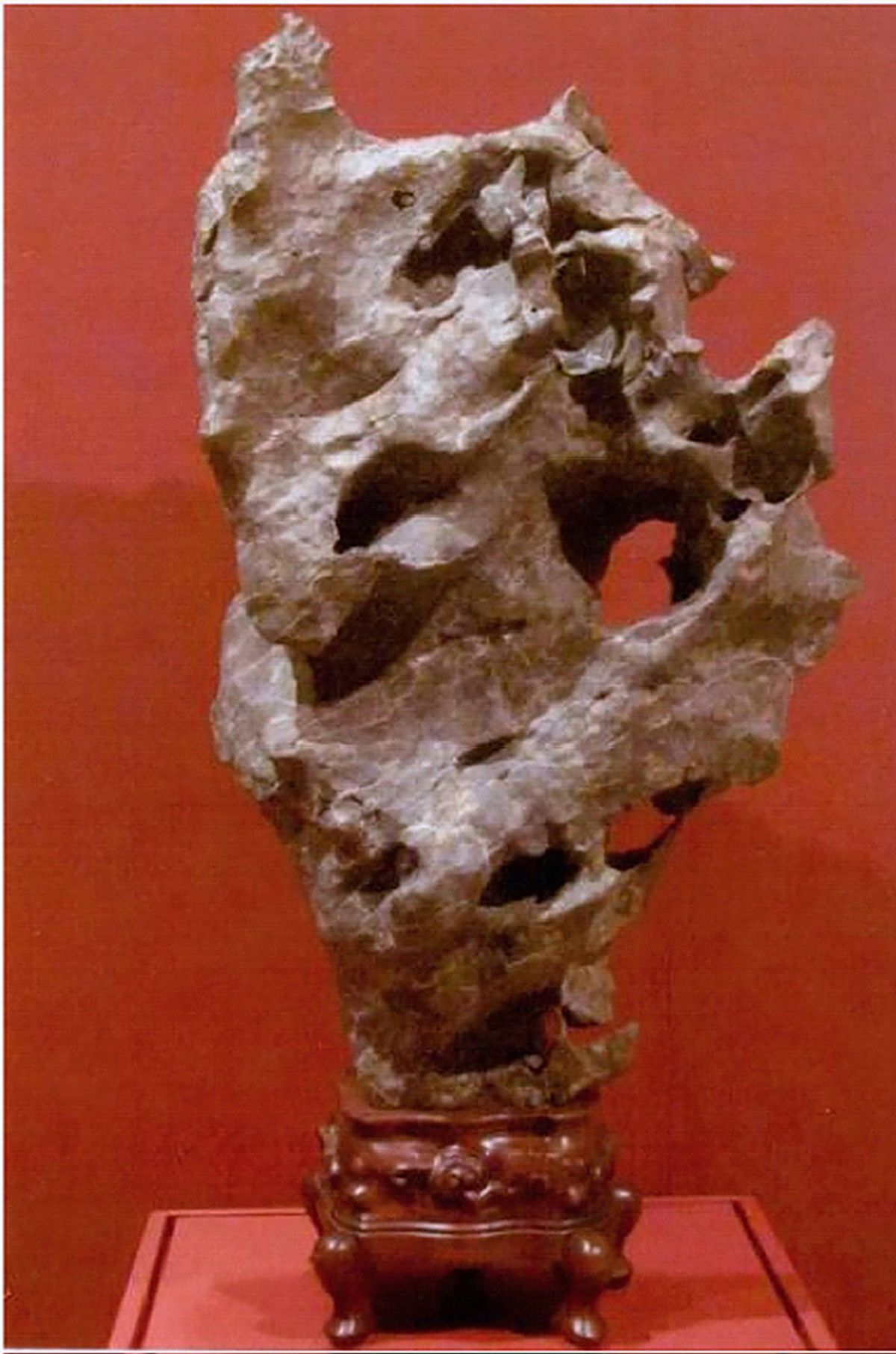North America Viewing Stones: Canada
Tracking Down a Remarkable Canadian Spirit Stone…
By Jeff Shortt
Sometimes, you ask yourself: “I wonder what happened to… ?” I recently came across some information on an extraordinary Viewing Stone, which turned heads about 12 years ago. It was entitled “In This Stone, the Spirit Sings.” The photograph here is of poor quality, and this Spirit Stone deserves to be seen at its best.
This is a call-out to anyone who might have information on its current whereabouts. Its beauty deserves to be admired by everyone. Kindly get in touch with me.
It was collected on Vancouver Island in British Columbia, Canada, in 2004 by Hal and Willis Seybold on their land claim in the Upper Tahnish Valley. Found under several inches of moss, it was removed by hand and carried out of a deep bush by canvas stretcher. It measures 74 cm (29 ¼ inches) high by 44 cm (17 ½ inches) wide and weighs 64 kilograms (140 lbs.) That’s dedication.

The stone was not altered in any way and retains all of its original form and structure. Its display stand was developed through the collaborative efforts of Hal and colleague John Noakes, a master cabinet maker. It is of black walnut and was carved to match the Chinese Jiangnan style, as deemed most appropriate for the stone.
The stone’s title was an adaptation of a work by British composer Karl Jenkins called “In These Stones Horizons Sing,” celebrating the opening of the Welsh Millennium Centre in November of 2004.
Spirit Stones have been collected in China for generations for display in their homes, offices, and studios. The small ones are sometimes called "pocket stones.” These collectible stones have only recently been discovered on Northern Vancouver Island. They have similar properties to those found and valued in China.
The following synopsis of the Stone was prepared for the Seybolds by Dr. Tracy Rushmer, Department of Geology, University of Vermont:
“… The ancient weather and water-worn limestone in this collection is from British Columbia, Canada. The stone was found in the mountainous region of the province at about the 2,000-foot level.
The rock was formed from material found on the ocean floor. Microscopic coral and pelecypod debris found in the stone suggests its' formation was in shallow banks surrounding marine platforms in the ocean. The limestone can be found in light gray to white and is Upper Triassic in age, roughly 200 to 300 million years ago. Calcite is the main mineral, with minor clay, organic matter, quartz, iron oxides and sulfides present. The density of the stone ranges from 2.7 to 3.0g/cm3, with the darker stones being of higher density because of the inclusion of iron oxide and/or iron sulfide and organic matter in the limestone itself. The undulating surface characteristics come from weathering and interaction with flowing water after formation. The holes come from boring organisms, bivalves, or other shellfish, which cut through the rock. The lines of white in the rock are veins formed during a fluid phase (usually composed of H20 + C02 plus dissolved chemical compounds) with deposits of calcium carbonate or silica filling in the thin cracks in the rock.
Stone that has a sheen to it is known as crypto-crystalline and extremely fine-grained. Some stones have resonance. This is most likely due to its extremely fine-grained micro-crystallinity and homogeneous nature, similar to glass with little porosity. All of the stones in this collection have between 93% and 89% calcite.
The term ying rock refers to a style of rock rather than a geographical location.
The ying rock found in China is similar to the ying rock found in British Columbia. The limestone rocks are dark from disseminated iron oxides, nonporous in general, quite homogeneous, and were formed at a similar time in relation to the ying rocks from China. Their physical characteristics, including sculptural shapes, texture, and boreholes, are also very similar in nature to the rocks from China.…“
This Spirit Stone is believed to have been on display in 2009 at the Pacific Northwest Bonsai Club Association convention in Seattle and in 2011 at the Art Gallery of Greater Victoria in British Columbia. At the time of this writing, these are its last known showings.
So, where is it now? Sadly, Hal Seybold passed away in 2015, and Willis Seybold could not be reached. The whereabouts of the Stone remain a mystery, which is a shame.
Excerpts from this article have been taken from various sources. The authorship of some, unfortunately, remains unknown. Every effort was made to give credit where due, and I welcome any corrections or claims by the original authors.
Archived Articles on Canadian Stones
List of Services
-
Cultivating Viewing Stone Appreciation: Bonsai Winnipeg’s EvolutionClick here List Item 1
The 2023 exhibition staged by the Bonsai Society of Winnipeg, Canada included an exhibit of 48 viewing stones, many as contemporary displays. The challenges encountered in the exhibition are discussed.
-
Tracking Down a Remarkable Canadian Spirit Stone…Click here
An extraordinary Viewing Stone, which turned heads about 12 years ago. It was entitled “In This Stone, the Spirit Sings.”
-
Remembering Arthur Skolnik - A Canadian IconClick here
In addition to his skills as a Bonsai artist, Arthur was a noted expert on Viewing Stones with an uncanny eye for their subtle beauty.

